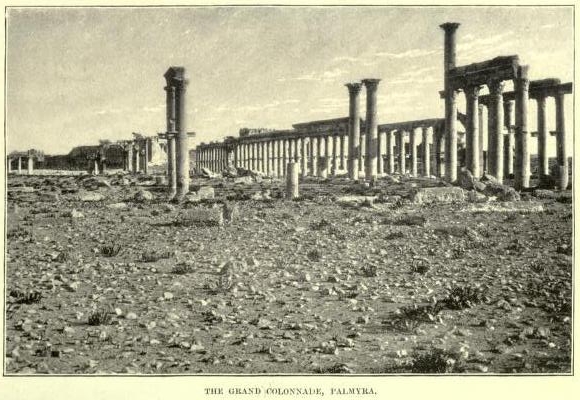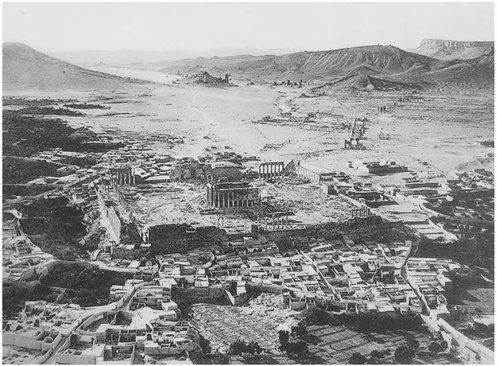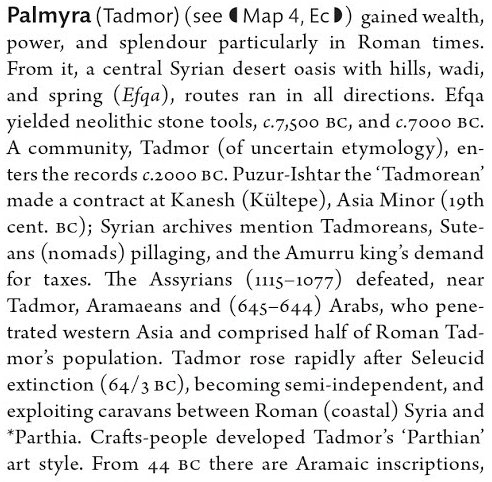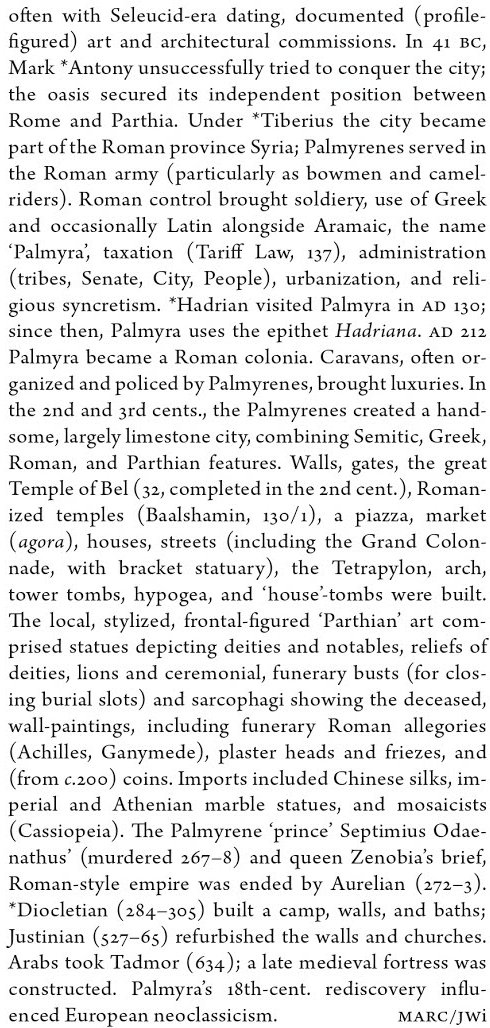|
Other Archaeological Sites / The Neolithic of the Levant (500 Page Book Online) Ancient Palmyra (Arabic Tudmor) Selected Excerpt on Palmyra The Neolithic of the Levant (1978) A.M.T. Moore (Oxford University)
The ancient city Palmyra was occupied from Neolithic times until it was destroyed by Muslims in the seventh century and later devastated by earthquakes in 1068 and 1089 (3) ...
The Amorites were the western Semites mentioned by Sumerians and Akkadians since the twenty-first century B.C. Their presence at Palmyra is not surprising for Amorite tribes occupied the North Syrian cities during the entire second millennium B.C. About 1100 B.C. the Assyrian king Tiglathpileser I organized a military expedition against the Syrian hinterland. The Assyrian Chronicle, in the usual first person, describes the events in the following manner: “Twenty eight times (I fought) the Ahlamu peoples and the Arameans, (once) I even crossed the Euphrates twice in one year. I defeated them from Tadmar which (lies) in the country Amurru, Anat which (lies) in the country Suhu, as far as the town Rapiqu which (lies) in Kar-Duniash (Babylonia). I brought their possessions as spoils to my town Ashur (ibid). Foot Note: Assyrian contacts with Asia Minor (Anatolia) since the twentieth century B.C. are well attested by the clay tablets found at Kultepe. The documents, written in cuneiform, deal with economics. The merchandise transported by the Assyrian caravans from Ashur into Asia Minor consisted primarily of textiles and lead. [In general] wool -- copper -- silver and gold were the commodities traded by the Assyrians [themselves]. Puzur-Ishtar of Tadmor, the person mentioned on the Assyrian tablet from Kultepe, was most likely an Amorite (ibid). Palmyra is in the center of an oasis on the northwest edge of the Arabian Desert. The site is culturally and economically linked to the main Syrian areas: the plain of the Hauran -- Damascus -- Homs (ancient Emesa) -- Hama and Aleppo. It is often described as the Bride of the Desert. Palmyra is without doubt the most beautiful and magnificent of the Syrian historic sites on the old Silk Road. The site at Palmyra provided evidence for a Neolithic settlement at the Efqa Spring with stone tools dated to 7500 BC. A sounding on the tell (mound) beneath the Temple of Bel uncovered a mud-brick structure built around 2500 BC followed by structures built during the Middle Bronze Age and Iron Age. The city entered the historical record during the Bronze Age when Puzur-Ishtar from Tadmor agreed to a contract at an Assyrian trading colony in Kultepe. It was mentioned next in the in the archives of Mari. Palmyra was an established caravan oasis when it came under Roman control in the mid-first century AD as part of the Roman province of Syria. It grew steadily in importance as a city on the trade route linking Persia, India and China with the Roman Empire, marking the crossroads of several civilisations in the ancient world ...
(1) The Pagan God: Popular Religion in the Greco-Roman Near East by Javier Teixidor (2015)
(2) The Oxford Companion to Classical Civilization: by Simon Hornblower -- Antony Spawforth -- Esther Eidinow (2014)
(3) Middle East and Africa: International Dictionary of Historic Places by Trudy Ring -- Noelle Watson -- Paul Schellinger (2014)
(4) An account of Palmyra and Zenobia by William Wright (1895)
Site of Palmyra --- UNESCO World Heritage Centre 1992-2017
Palmyra in Wikipedia
|








